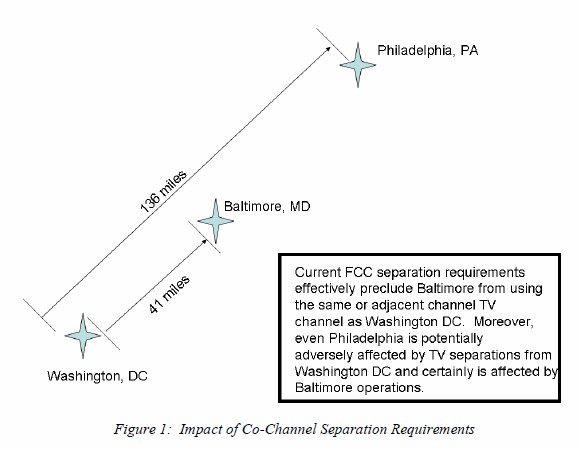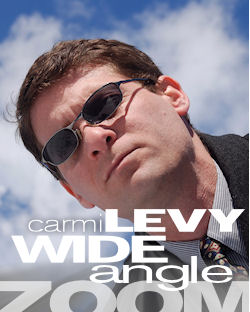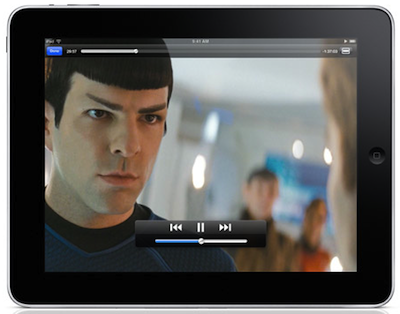By Scott M. Fulton, III, Betanews
 As time steadily runs out for the US Federal Communications Commission to present to Congress its proposal for federal investment in broadband Internet communications -- a proposal that's expected to be heavily focused on wireless, which falls under the FCC's purview -- major players in the debate keep dropping show-stopper bombs into the debate. One such bomb, which erupted last December, was AT&T's plea to set a firm timetable for the discontinuation of wireline telephone service in the US.
As time steadily runs out for the US Federal Communications Commission to present to Congress its proposal for federal investment in broadband Internet communications -- a proposal that's expected to be heavily focused on wireless, which falls under the FCC's purview -- major players in the debate keep dropping show-stopper bombs into the debate. One such bomb, which erupted last December, was AT&T's plea to set a firm timetable for the discontinuation of wireline telephone service in the US.
As it turns out, another bomb was dropped at around the same time, though with a longer fuse: The wireless industry association CTIA last month joined with the Consumer Electronics Commission to propose to the FCC what they characterized as an alternative solution to the problem of finding room in the nation's wireless spectrum for broadening broadband. Specifically, the two groups suggested that DTV broadcasters don't really need all the spectrum they were given during the transition process, which finally ended last year.
"The goal of the proposed reengineering concept would be to free up spectrum by grouping full power TV licensees into a smaller portion of the existing television broadcast allocation and reducing the spectral separation between licensees. With this approach, initial estimates indicate that 100-180 MHz of spectrum may be freed for mobile broadband use across the country," reads the group's proposal last month (PDF available here). "The value of the new spectrum made available through such efficiency gains could range from approximately $35B and $70B. Notably, this concept would leave consumer equipment intact, and preserves the entire 19.4 Mbps digital data stream currently available to full power television stations."
From a practical perspective, the new transition would not mean the distribution of more government coupons towards the upgrading or replacement of converter boxes, as CTIA and CEA perceive it. Rather, they argue that under the new DTV system already rolled out, DTV receivers and converters already in the field are capable of being reprogrammed (a bit like re-flashing one's BIOS) to rescan the frequencies they use, so that "virtual channels" (the ones used in station identification) map to new physical channels. It's an easy enough process, they point out, adding that it's actually been done once already anyway post-transition.
The groups propose moving DTV channel allocation in such a way that there's less "white space" between them, while preserving each channel's bandwidth of 6 MHz at 19.4 Mbps. They say that this rescanning could be done at no cost to broadcast stations. But as the National Association of Broadcasters pointed out in its rebuke of the groups to the FCC, that's a bit like calling the distribution of high-priced commercial software a "free download."
For the CTIA and CEA proposal to be pulled off, a very big transition would need to take place, not in the broadcast spectrum but in the way broadcasting actually works. The reason for white spaces' existence, you see, was to enable broadcasters to erect high-wattage transmitter towers, to cover a broader geographic area without the fear of interference with channels in other cities. If channels were moved closer together, the probability of station interference would dramatically increase.

A diagram from the CTIA's and CEA's proposal to the FCC suggests that current DTV transmitters use too much power, and aren't fair to tightly-bunched cities.
But that could be offset by the group's proposed replacement of the nation's broadcast transmitters, with lower-power, lower-coverage area antennas in a network they call distributed transmission system (DTS). It would amount to, the NAB argues, a cellularization of the nation's TV airwaves that could convert the Great Plains of Kansas, Oklahoma, and Texas -- the home of the tallest and most powerful manmade structures on Earth -- into huge transmitter farms.
The current modulation system for US DTV is called 8-VSB, which the NAB says was chosen because it fits the current transmission model -- single, big towers that cover broad areas, with frequencies separated by big buffer zones. The DTS proposal, says the NAB in its own comments to the FCC filed yesterday, would result in smaller towers everywhere whose signals bump into one another.
"On paper, a carefully engineered system, with all transmitted signals properly synchronized and with signals from multiple stations being received with the proper amplitude relative to one another, could reduce this interference," reads the NAB's response (PDF available here). "But in the real world, signal variations due to radio propagation effects and tower siting problems make such perfection unattainable. The inevitable result of these real-world problems would be that viewers would receive signals with improper amplitude or subject to delays relative to one another -- in both cases causing substantial loss of service to American consumers due to interference.
"Wide-scale deployment of DTS for broadcast television is not practically achievable with a single-carrier system such as 8-VSB without causing additional interference. DTS cannot be implemented to 'cellularize' DTV nationwide, but may be used primarily as a means to provide 'fill-in' service where high-power DTV signals were blocked by terrain or buildings, or other constraints," the NAB continues. "While DTS may work well to solve limited coverage problems, a complete cellularization of entire DTV service areas using 8-VSB is extremely technically challenging and impractical. Signals from different DTS transmitters will reflect off buildings and other obstructions and other propagation factors and will cause signals to lose synchronization and/or be outside the equalizer range of DTV receivers. (Or they may be at varying signal strengths, so that adequate signal-to-noise in the receiver will be unattainable.) And, given that all existing DTV receivers now in the hands of consumers may not function properly in such an environment, many viewers will lose existing service due to interference."
In a strangely familiar sounding counter-argument, the NAB takes the CEA and CTIA to task for -- in the two groups' own words -- taking an extreme position on a subject, but then in a disclaimer, confessing that viewpoint may not be their own, and that they only made the comment to see what people would say.
Indeed, the groups' own proposal concludes with this paragraph: "The purpose of this white paper proposal is to stimulate discussion and study of a potentially achievable way of rendering current spectrum available for important wireless broadband needs while ensuring no disruption for consumers and no injuries to over-the-air full-power broadcast television capabilities while, at the same time, potentially enabling next-generation television services along with next generation wireless spectrum. CEA and CTIA recognize that there are many challenges and complexities associated with this proposal, but offer this contribution in the spirit of stimulating respectful and thoughtful discussion by all interested public and private parties."
Oh, really? "CEA/CTIA have offered their DTS proposal 'to stimulate discussion,'" reads the NAB's own closing. "It is in this spirit that we raise the following concerns. Our initial assessment shows that DTS, while it can be used as a fill-in technology under certain circumstances, cannot, for a host of technical and practical reasons, be adopted as the sole architecture for delivering over-the-air DTV. Use of DTS in this manner would cause the viewing public to suffer significant service losses and would be cost prohibitive. Because of various serious technical complexities that CTIA and CEA have acknowledged, the proposed system is simply impractical. Moreover, implementation of DTS would not fulfill the ultimate goal of the proposal: to free up large contiguous blocks of spectrum for use by other services, particularly in the most heavily populated areas in the country."
In the coming months, this debate is only liable to get hotter, for one important reason: Comcast, the nation's leading cable provider, is building up its own wireless Internet service. So far, its interests and that of the CTIA have been seen as mutual, and Comcast made itself heard loudly and clearly at last year's CTIA event. It's working out the details of its proposed acquisition of NBC Universal, parent company of the nation's first broadcast television network. Up to now, NBC's interests were closely aligned with those of the NAB, which represents not only broadcast networks but their affiliate stations and affiliate owners -- the groups who would be responsible for replacing all those big transmitters with smaller ones. The implication of a shift in alignment has already captured the attention of Congress, which could very well run a stake through the acquisition deal.
But doing so could devalue NBC, whose current parent company General Electric is now perceived as wanting to divest itself from money-losing broadcast interests. A devalued NBC could, in turn, hurt the profitability of its affiliates, which was already put in jeopardy by the monumentally mishandled prime-time/late-night programming shuffle. This brewing situation will certainly "stimulate discussion" in the coming months.
Copyright Betanews, Inc. 2010

























 The original reason for Microsoft Office's existence was to provide retailers with an incentive to move product that wasn't moving. The bundle created a discount deal that enabled the momentum behind Excel, which was hot, to help push Word, which was not. It had hardly a tenth of the sales volume of WordPerfect, and Word was a product that retailers had to actively work to sell. This was at a time when software consumed shelf space in stores and was sold like automobiles -- a time which is now essentially gone.
The original reason for Microsoft Office's existence was to provide retailers with an incentive to move product that wasn't moving. The bundle created a discount deal that enabled the momentum behind Excel, which was hot, to help push Word, which was not. It had hardly a tenth of the sales volume of WordPerfect, and Word was a product that retailers had to actively work to sell. This was at a time when software consumed shelf space in stores and was sold like automobiles -- a time which is now essentially gone. What I can say from tinkering with Outlook 2010 is that somebody at Microsoft gets it. Regardless of where we work, how we get to work, how much work we do when we work, or whom with work with, all of our workplaces are becoming more like virtual offices than physical ones. We're supported by the structure of our business connections with one another, as much as by steel beams and concrete. Geography is not the barricade to production that it used to be.
What I can say from tinkering with Outlook 2010 is that somebody at Microsoft gets it. Regardless of where we work, how we get to work, how much work we do when we work, or whom with work with, all of our workplaces are becoming more like virtual offices than physical ones. We're supported by the structure of our business connections with one another, as much as by steel beams and concrete. Geography is not the barricade to production that it used to be.
 While Apple is exceptionally adept at leveraging the latest principles of industrial design to create products that elegantly fit into our day-to-day lives, its experience with the iPod, iPhone, and now the iPad reinforce its belief that great hardware can only get you so far. Eventually, someone else will introduce a competing device that looks better, has a more compelling feature set, massages those features together more effectively, does so at a more affordable price point, and makes anything that came before it look like yesterday's news. If you're banking on the sexiness of the device itself (which pretty much describes most hardware-focused vendors these days) you're missing the big picture.
While Apple is exceptionally adept at leveraging the latest principles of industrial design to create products that elegantly fit into our day-to-day lives, its experience with the iPod, iPhone, and now the iPad reinforce its belief that great hardware can only get you so far. Eventually, someone else will introduce a competing device that looks better, has a more compelling feature set, massages those features together more effectively, does so at a more affordable price point, and makes anything that came before it look like yesterday's news. If you're banking on the sexiness of the device itself (which pretty much describes most hardware-focused vendors these days) you're missing the big picture. As time steadily runs out for the US Federal Communications Commission to present to Congress its proposal for federal investment in broadband Internet communications -- a proposal that's expected to be heavily focused on wireless, which falls under the FCC's purview -- major players in the debate keep dropping show-stopper bombs into the debate. One such bomb, which
As time steadily runs out for the US Federal Communications Commission to present to Congress its proposal for federal investment in broadband Internet communications -- a proposal that's expected to be heavily focused on wireless, which falls under the FCC's purview -- major players in the debate keep dropping show-stopper bombs into the debate. One such bomb, which 
 2. Persistant data connection costs too much. The cheapo, 16GB model sells for $499 with 802.11n wireless. For 3G, buyers must pony up between $629 and $829 plus another $30/month to AT&T for data service. Well, there's a 15-buck plan for 250MB of data. Amazon's Kindle and Barnes and Noble Nook ebook readers come with free 3G service. Sure, iPad does so much more, but the user not only pays about twice as much for the device but $15 or $30 month, instead of nothing. The bigger question: Why pay for two 3G services -- smartphone and iPad? My answer is none.
2. Persistant data connection costs too much. The cheapo, 16GB model sells for $499 with 802.11n wireless. For 3G, buyers must pony up between $629 and $829 plus another $30/month to AT&T for data service. Well, there's a 15-buck plan for 250MB of data. Amazon's Kindle and Barnes and Noble Nook ebook readers come with free 3G service. Sure, iPad does so much more, but the user not only pays about twice as much for the device but $15 or $30 month, instead of nothing. The bigger question: Why pay for two 3G services -- smartphone and iPad? My answer is none.
 iPad
iPad Archos 7
Archos 7 Nokia N900
Nokia N900 Viliv X70 EX
Viliv X70 EX hoozdaar: "Yes, I will buy one. I'll wait a while until the price drops $100 like Apple products always seem to do. I see people are disappointed that this device is not a laptop, I don't think it's intended to be. It is a really big itouch [iPod touch] with major improvements. I love my itouch. I kill time with it, look up info and email with it, read the news and sports, etc. Even listen to music. It is always with me...I don't read ebooks today, but that seems to be the future. Several organizations I belong to want to get rid of their magazines and newsletters. I don't want [to] carry a laptop or even a netbook around with me to read things."
hoozdaar: "Yes, I will buy one. I'll wait a while until the price drops $100 like Apple products always seem to do. I see people are disappointed that this device is not a laptop, I don't think it's intended to be. It is a really big itouch [iPod touch] with major improvements. I love my itouch. I kill time with it, look up info and email with it, read the news and sports, etc. Even listen to music. It is always with me...I don't read ebooks today, but that seems to be the future. Several organizations I belong to want to get rid of their magazines and newsletters. I don't want [to] carry a laptop or even a netbook around with me to read things."